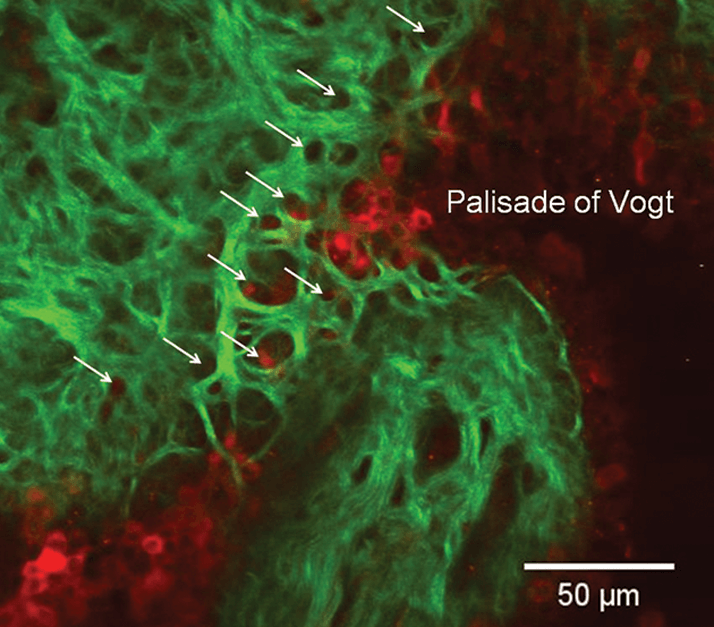
News that a new part of the body – a layer of the cornea – had been identified back in 2013 was such a big story that it transcended the world of biomedical news and hit the mainstream media. It’s happened again: another new part of the human anatomy has been discovered – and again, it’s in the cornea (1).Second harmonic generation imaging microscopy (SHIM) is an excellent method of producing extremely high-resolution images of certain (non-centrosymmetric) structures – one of which is collagen, the major structural component of the cornea. Researchers from the Albert Einstein College of Medicine in New York used SHIM on the cornea and managed to identify two new collagenous structures: a cribriform layer beyond the terminating loop of the limbal vasculature, and fibers connecting the peripheral cornea to the limbus (Figure 1). “What makes this finding extra interesting is the proximity of these new structures to a stem cell region where we already perform limbal stem cell transplants to replenish the corneal epithelium when it is lost to disease or injury,” said study co-author Roy Chuck.
The researchers were led in the right direction by several previous studies that used X-ray diffraction (XRD) imaging to identify collagen fibrils anchored in the limbal region. But XRD can only detect the presence of a given material, and not its architecture, whereas SHIM was able to resolve the conformation of collagen fibers, thereby revealing these previously unknown structures at the submicron scale in the eye – the anterior limbal cribriform layer and its presumed anchoring fibers. Although the function of these new structures remains unknown, the authors suggest a potential role in maintaining the stem cell and vascular surrounding environment in healthy corneas. The cribriform layer, which is composed of structural proteins like collagen and elastin, may also provide support to the region of the eye it underlies. “Hopefully we will be able to better understand the function of these newly discovered structures by monitoring their appearances in various disease states of the ocular surface,” said Chuck.
References
- CY Park, et al., “New details of the human corneal limbus revealed with second harmonic generation imaging”, Invest Ophthalmol Vis Sci, 56, 6058–6066 (2015). PMID: 26393473.
